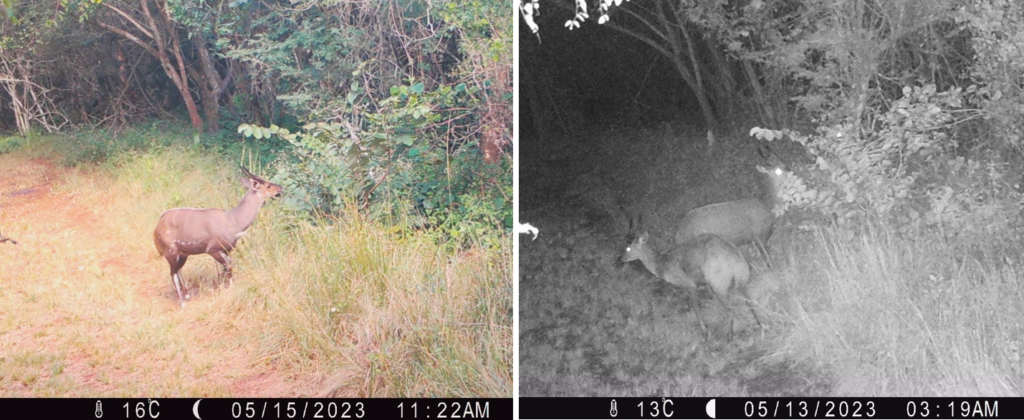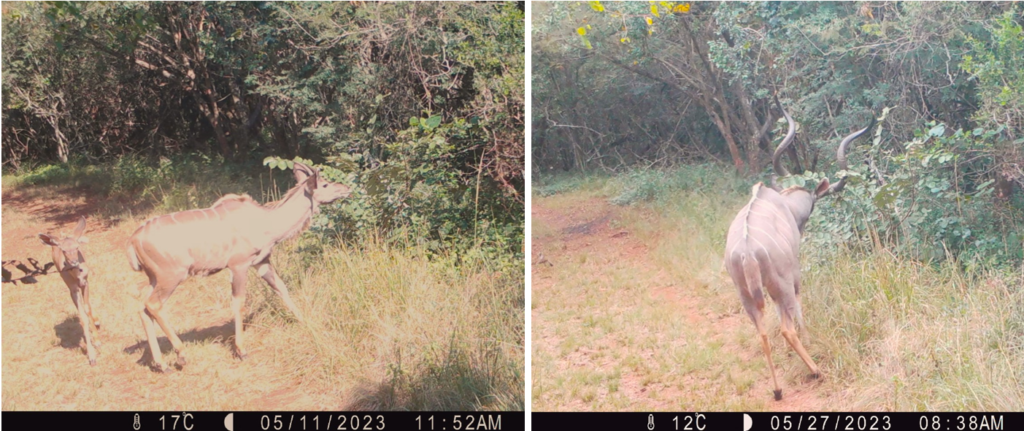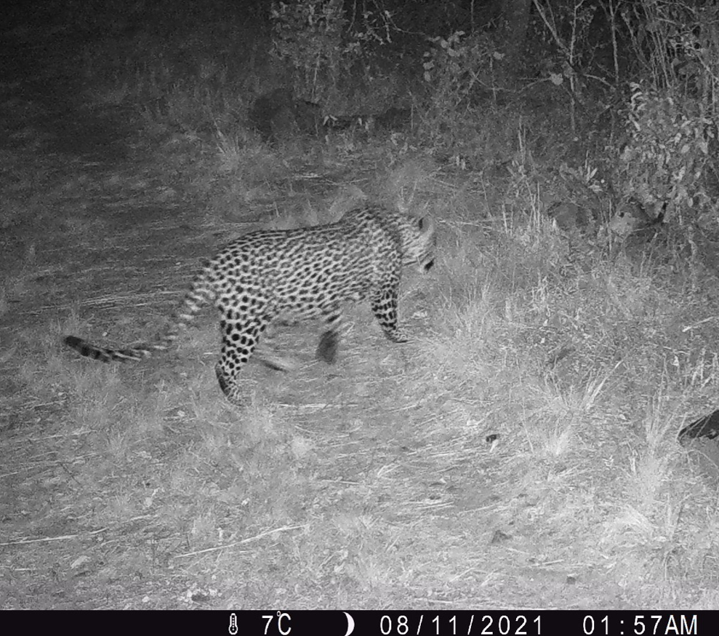Scent marking is an important way for animals to communicate. It is like leaving a lingering olfactory visiting card brimming with information. The chemicals in the scent markings could serve to indicate the presence of an animal, the species, their social status and rank, whether male or female and to assess each other as partners or as rivals. It is also used to claim space and designate home ranges as the scent can persist for a long time.
The behavioural “bycatch” from one of the leopard monitoring cameras on Mountainlands yielded insights into the ungulate species that scent mark a specific shrub with their postcornual glands, situated on the forehead between the horns. The shrub is a Grewia monticola (Grey Raisin) with a woody climber, Rhoicissus tomentosa (Common Forest Grape) growing in its branches. The plants are located at the intersection of a game trail and a vehicle track. Perusing a month’s photos revealed which animals visited the shrub and what they did. There were a few foggy nights when the animals could not be identified. The camera captured greater kudu, impala, nyala and cape bushbuck advertising their presence at different times of the day and night.

Hm…bushbuck perfume.
The main bushbuck role players were an older ram, followed by a younger lone ram and two even younger rams who banded together. The older ram visited the shrub nine times during this period – mostly after dark. He would smell the leaves and rub his face and horns vigorously in the leaves and branches. The younger, lone male visited three times and wiped his face against the leaves. The two younger ones visited four times and would only smell the leaves. It appears there may be a dominance hierarchy with a concentration of visits and marks made by the older individual. According to animal behaviourists there is a link between object aggression and marking behaviour and that trees, branches, shrubs, grasses and even rocks can be attacked when no potential rival is present.

from left: The nyala bull and impala ram rubbing their horns against the shrub
A nyala bull came past twice – once ignoring the plants and on another occasion nearly destroying the plants as he vigorously rubbed his face and horns through it. Nyalas and bush bucks have a sympatric relationship with overlapping ranges and the footage shows that the vigorous rubbing of the dominant bushbuck ram increased around the time when the nyala bull thrashed the shrubs with his horns. In some species it has been noted that the frequency of forehead gland marking increases before, after and during competitive encounters. An impala ram came past once and smelled the leaves before rubbing his face against it. They can be territorial during mating season or gregarious.

The kudus
A kudu calf, two young bulls and a cow smelled the leaves on one occasion and there are three occasions where a mature kudu bull was photographed smelling the leaves and rubbing his face and horns against it. Kudus are not territorial but do have home ranges. Studies have shown that in some species marking with the coating of secretions is not linked to aggressive behaviour, and may indicate presence but not necessarily status.

A leopard walking towards the shrub.
Two years ago the camera photographed a leopard moving towards the same shrub, but there is no footage of the leopard smelling it or marking it by urinating against it. It is known that a strong scent of a species like a leopard marking a tree or shrub may prompt other animals to respond with marking behaviour.

